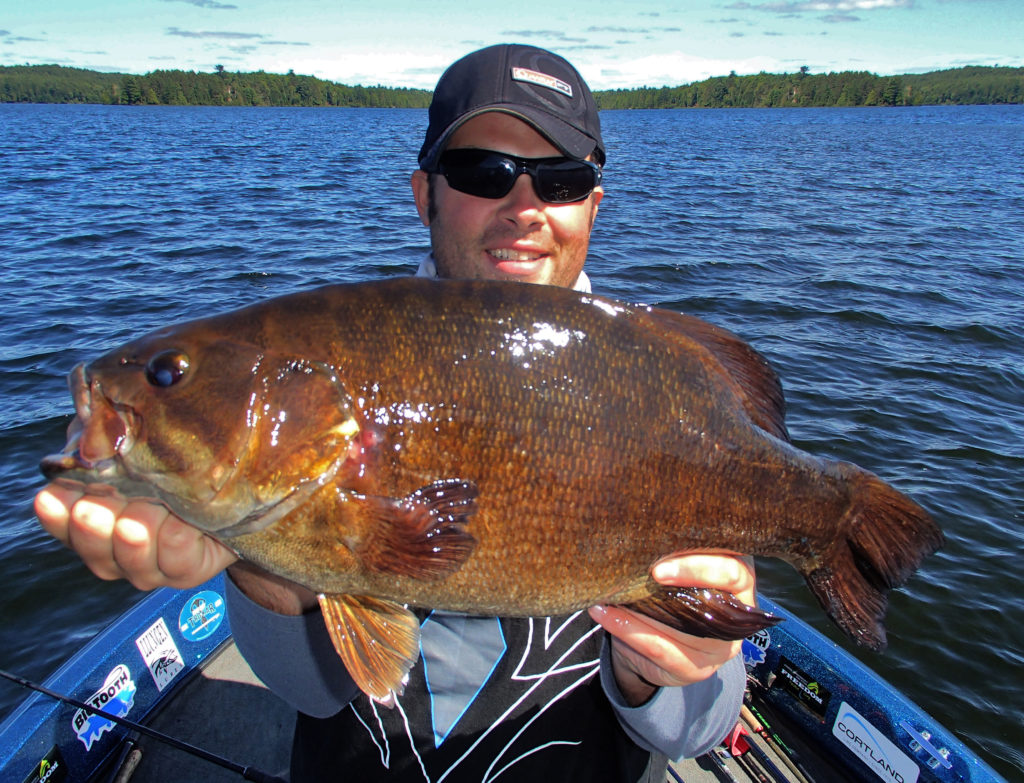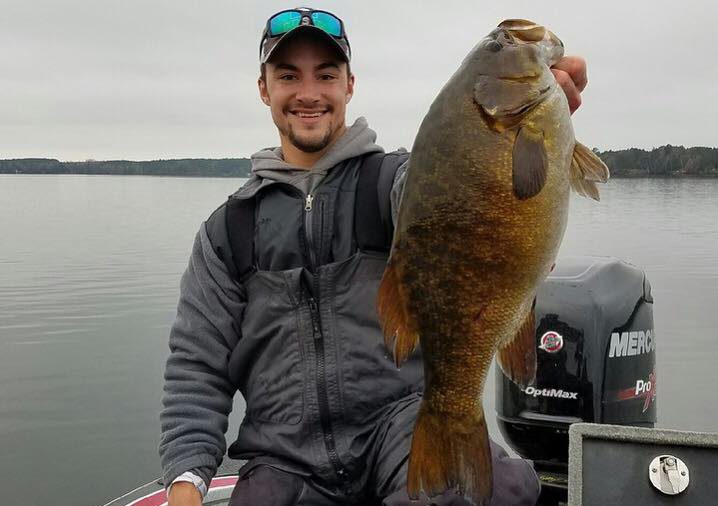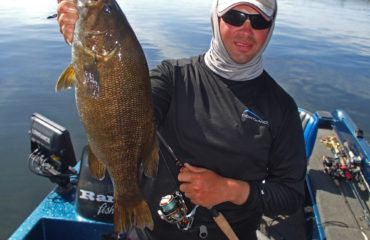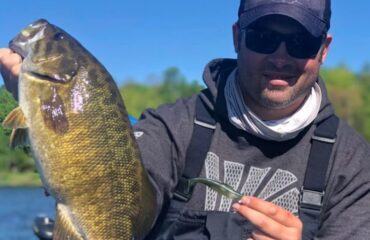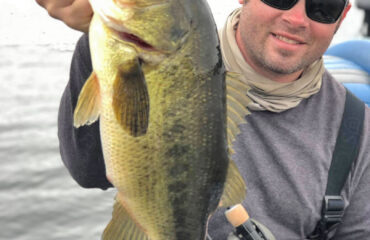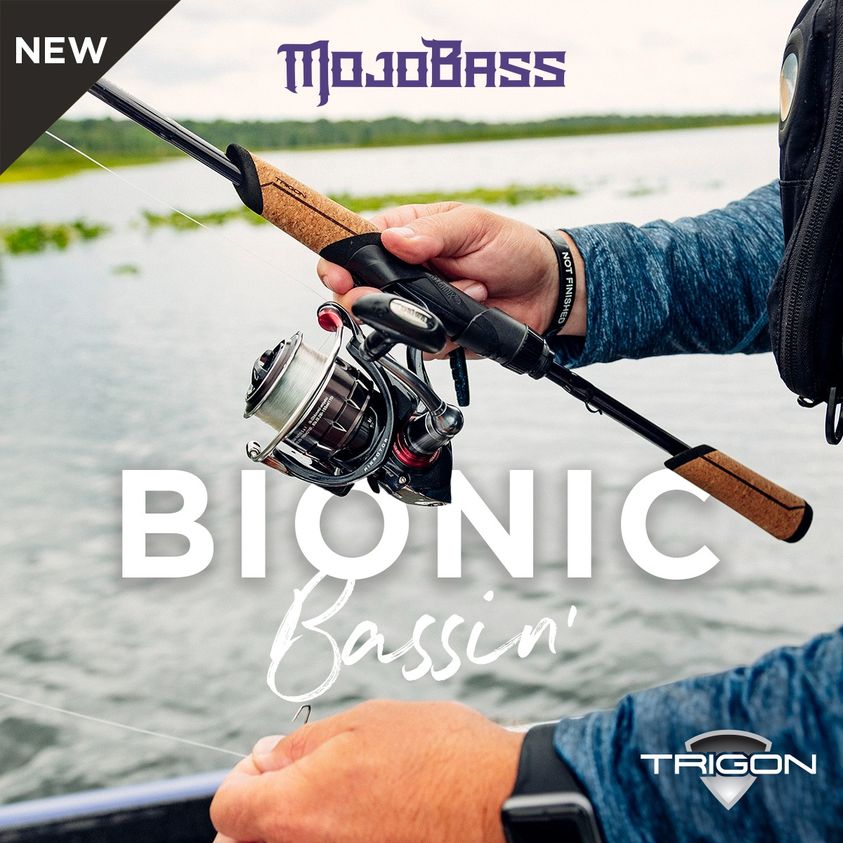Mysteries of the Deep: Schooling on Cisco Smallmouth
Lakes are the lifeblood of the northwoods. From the expansive Great Lakes to the inland lakes throughout Wisconsin, Minnesota, Michigan and Northwestern Ontario, a large percentage of our lakes surface acreage and water columns from top to bottom have gone unexplored.
Similar to the world’s oceans, the shallower regions of lakes, fished and mapped to death by bank beaters, have understandably received the lion’s share of fishing pressure. As our lakes near-shore habitats and locations continue to absorb the greatest number of anglers and exploitation, their much more expansive vast open water basins have gone ignored and unvisited. Its fisheries are still largely untapped and undiscovered by anglers.
Most bass fishermen mistakenly believe a lake’s biodiversity and fishing productivity lessens as you fish deeper water down towards its thermocline. That belief exists in part because it’s more difficult to consistently catch fish as you cover greater ranges of depth and large expanses of surface acreage. Bass populations in these open water environments might also be of lower density too. Even though these factors add to the level of fishing difficulty, don’t let fear of open water and reliance on fishing shoreline regions dictate your bass fishing strategy.
On pressured bass fisheries, the best fishing for its giant bass could take place out in its open water. Recent exploits by northern bass anglers on these fisheries, and cisco population studies conducted by fisheries biologists in northern Wisconsin and Minnesota, have begun to confirm this shift in fishing strategy for open water fishing productiveness.
A whole strange world of life in the deep, cool waters of our northern bass fisheries is slowly emerging. Many of them are very deep and clear, home to cool water fisheries that are driven by cisco.
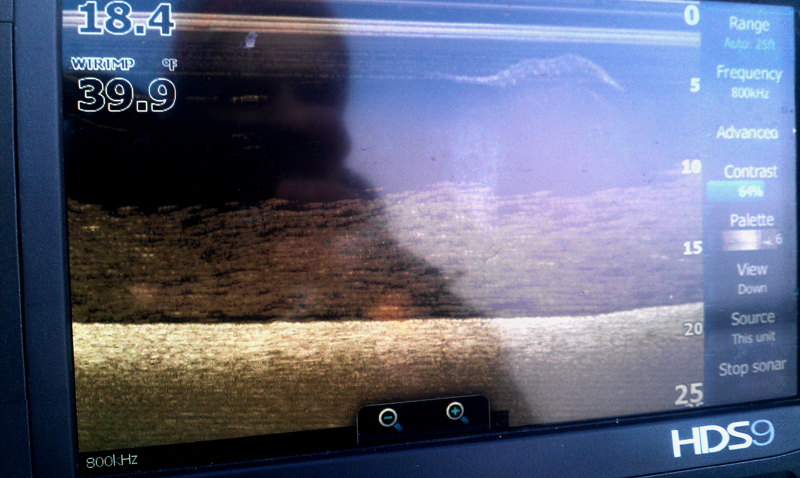
Schools of cisco, captured on down imaging during the annual fall cisco spawn.
Canaries of the Cold Water
Roaming somewhere in the deep open water abyss of these cool northern lakes, a peculiar eco-sensitive pelagic baitfish species drives the fishery and its resident gamefish populations. Cisco congregate in schools to roam the open water for feeding, homing, and sanctuary. As cisco go on the move, so too are smallmouth.
Some of the largest bass of every lake are following every desirable cisco school’s next move.
Cisco, a native species of lake herring, are distributed throughout Canada and the northern United States. They occur in pelagic, cold water Great lakes and inland lake environments. The species has a narrow habitat requirement, as it is usually limited to deeper lakes where waters near the bottom remain cold and well-oxygenated year-round.
Cisco primarily feed on microscopic zooplankton and insect hatches throughout the upper water column, making them elusive and highly migratory. They mature at 9 to 18”, and spawn as fall gives way to winter and water temperature drops to 40 F. Spawning takes place in the rocky and gravelly shallows of lakes.
In Wisconsin, cisco populations are most common in its northern inland lakes. They are present in relatively few inland lakes in Wisconsin, but where present they may play important roles in the lake ecosystem. Their presence signifies excellent water quality. If their populations ever decrease or disappear entirely, it may indicate that the quality of a lake’s ecosystem is in decline.
Cisco are very sensitive to any natural and man-made changes to their ecosystem.
Climate change, hot summers and extreme water temperatures have resulted in some significant summer kills of cisco in Wisconsin, as well as their declining populations in many northern bass waters overall. As the water in our northern lakes warms, living space and habitat for cold-water fish is lost. These events surely negatively impact a fishery and its entire ecosystem, and reduce growth rates and sizes of gamefish. How it could potentially affect a trophy bass fishery and its feeding preferences at this time is unknown.
While the current distribution and population status of cisco is poorly known, the Wisconsin Department of Natural Resources has undertaken cisco population surveys in recent years. The goal of these surveys (most recently in 2014) was to sample as many of the inland lakes of Wisconsin as possible that were known or suspected to have cisco populations.
The survey confirmed cisco is present in about 188 Wisconsin lakes. As a result of their cisco forage, many of these lakes have consequently grown and cultivated trophy smallmouth fisheries.
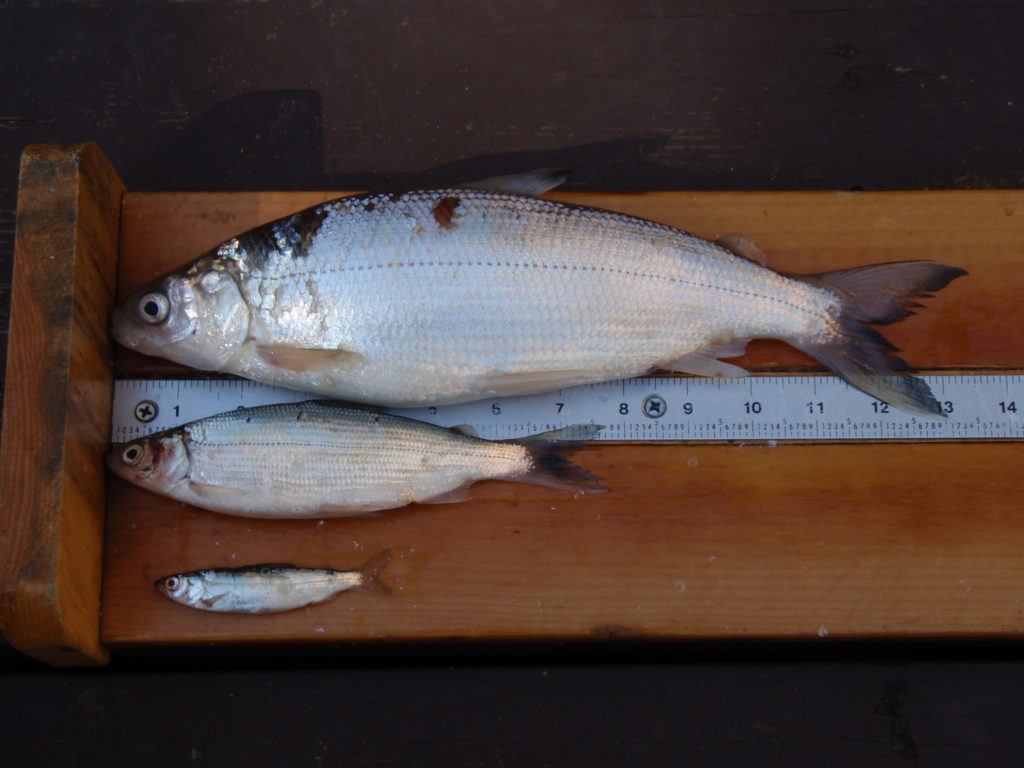
For a size comparison, here is a set of cisco photos taken by Steve Gilbert during an August or early September, 2017 cisco survey. “The smallest one (3.5 to 4”) in each photo is a young of year fish. The one in the middle of the three fish slide is probably a two year old,” writes Gilbert. / Photo Steve Gilbert
Steve Gilbert, Woodruff Area Fisheries Supervisor of the Wisconsin Department of Natural Resources, participated in these recent cisco surveys. As the former Vilas County fisheries biologist, his surveys were conducted in the northern region of the state, where cisco lakes are most prevalent.
Gilbert is largely responsible for growing and establishing the template for many of the region’s trophy smallmouth fisheries and their regulations. “The presence of cisco does not equal big bass, but it does help,” he confirms. “Wisconsin is at the southern edge of their range and this is due to water temperature. The upper limit of their preferred temperature is in low 60°f range,” he concludes.
Cisco is an important forage fish for all gamefish species. Smallmouths prey heavily on cisco where they are available. With soft fins, oily fatty meat, and ideal size, the cisco makes a perfect prey fish. Smallmouth in these waters undoubtedly grow more efficiently, require fewer meals, and expend less energy. Describing their weights and girth, one could tell these fish must have been first in line at the all-you-can-eat cisco buffet.
Cisco waters can help grow gigantic bass. Non cisco waters on the other hand can grow gigantic bass also. Certain lakes have higher odds in sustaining cisco, all relative to temperature and oxygen requirements.
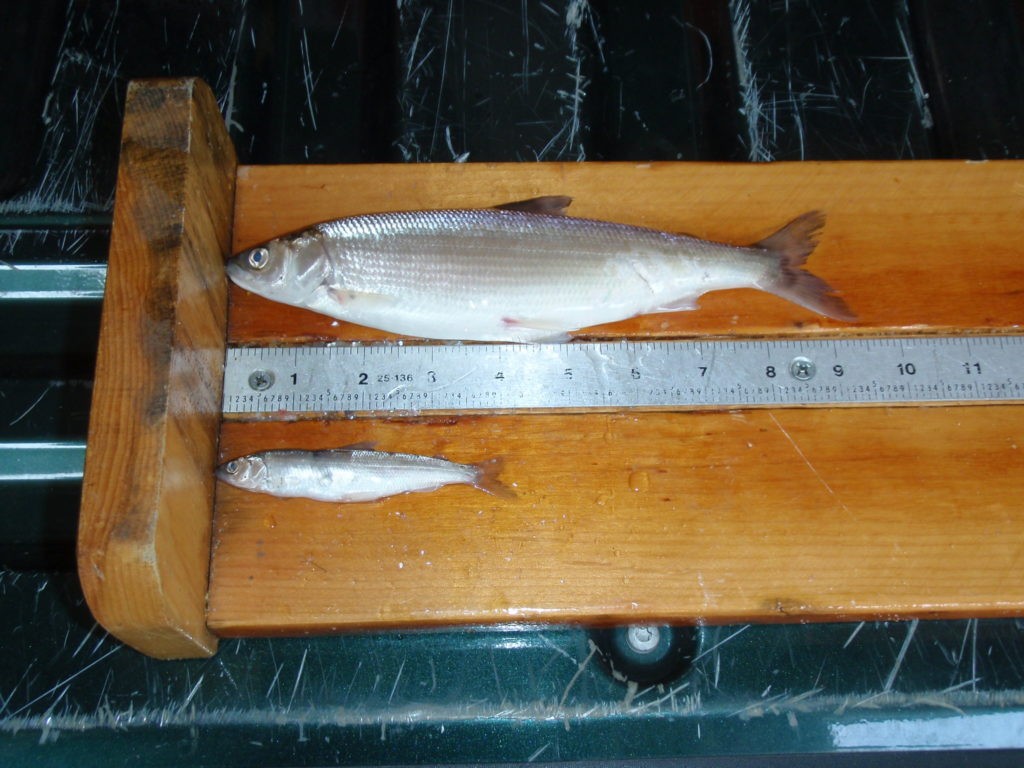
For a size comparison, here is a set of cisco photos taken by Steve Gilbert during an August or early September, 2017 cisco survey. / Photo Steve Gilbert
The Template of Trophy Northern Smallmouth Fisheries
Cisco lakes in Wisconsin are uncommon, but most of them have trophy smallmouth fisheries where undisputed heavyweights roam their open waters.
While the presence of cisco helps produce giant smallmouth, it’s not the most major component of Gilbert’s trophy fish equation. According to him, there are four ingredients to growing a trophy smallmouth recipe.
“Number one is a low density bass population,” says Gilbert. “Smallmouth bass populations with numbers of fish over 8 inches at 0.7 to 1.0 per acre have the biggest fish. This is a density dependent thing with low recruitment,” he admits.
Many of Wisconsin’s top cisco lakes are also low population density smallmouth fisheries.
“Abundant forage” is the second. “Lots of crayfish, gobies, yellow perch, and a decent cisco population grows fish,” he says.
Smallmouth will feed on whatever food is available to them. On many of northern Wisconsin’s low population density smallmouth bass fisheries, cisco is the dominant forage species alongside of rusty crayfish.
In order for smallmouth to grow and then maintain their weights into old age, “Abundant food of the proper size (gape issues) is critical,” Gilbert confirms. “Smallmouth need crayfish early in life, but once they get above 16” baitfish start to be an important part of their diet,” he concludes.
Ideal habitat is Gilbert’s third ingredient. Most of Wisconsin’s cisco lakes are these bigger waters. “Big lakes greater than 1,000 acres, with deep water (greater than 40ft), clear water, moderate fertility (alkalinity around 30 ppm), no shoreline vegetation, and a fish community dominated by walleye and perch/gobies,” he stresses.
Protective regulations are the last ingredient. “The early catch and release season and an 18” minimum length with a one fish bag is critical (larger minimum size limits or catch and release will also work)”, he says.
Long story short, smallmouth bass need to live to be 20 plus years old to get to 20 inches or bigger. Once they have topped off at certain lengths, they begin growing wider, weighing heavier. By that age, they are wise to evade anglers and feed selectively on the best food sources available.
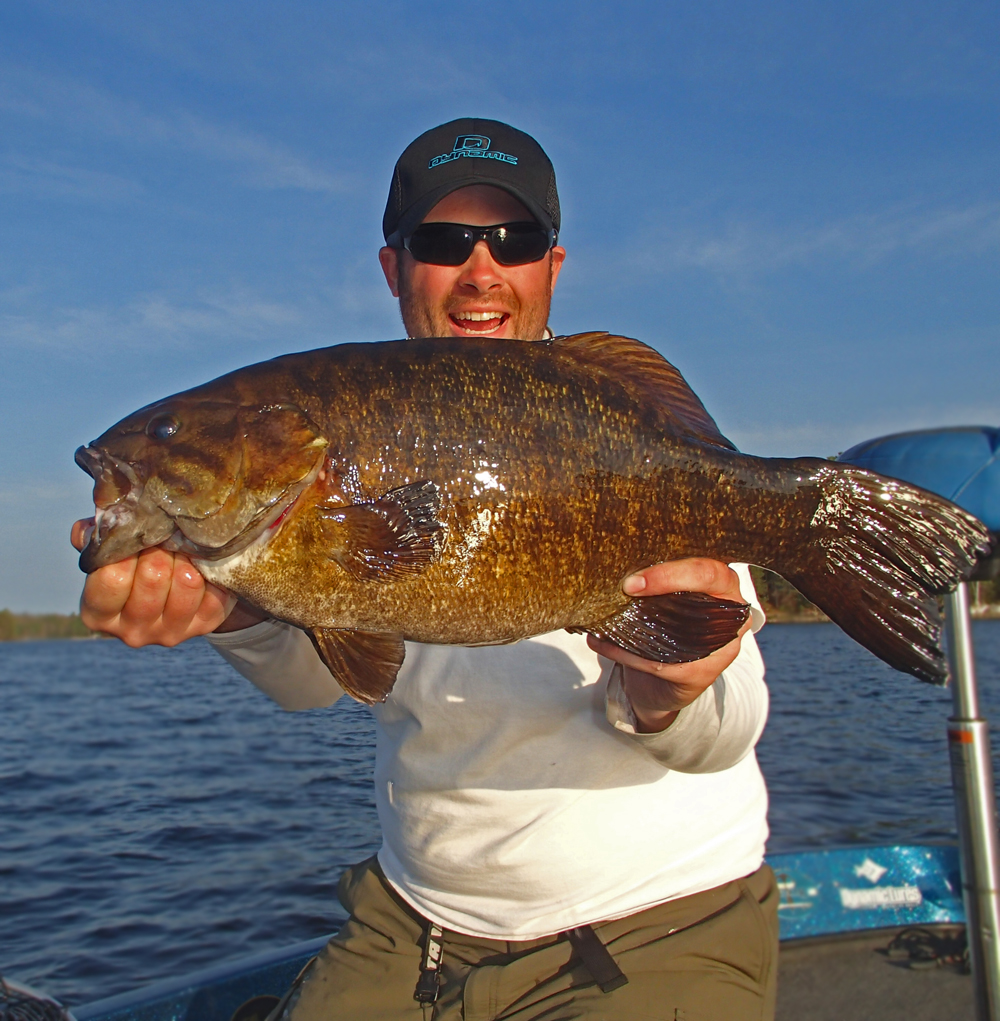
Few inland Wisconsin waters are capable of rearing 6 pounders. Fewer are able to rear a fish surpassing 7 or 8 pounds, but a few unicorns like the author’s personal best 7 pounder do exist. To help maintain their weights and size, smallmouth of this size will often be on a protein rich cisco diet, and as elusive as these baitfish are.
Pelagic Patterns
From a biologic standpoint, cisco isn’t as major of a component to driving a trophy smallmouth fishery. But from an angler standpoint, the connection and open water relationship between predator (the lake’s largest bass specimens) and prey is obvious.
Northern bass fishermen have been recently exploring the open water basins of lakes to escape the angling pressure and increasing masses of fishermen pounding near-shore locations. Although it drives us away from the higher bass population densities of near-shore habitats and locations, the strategy of moving offshore into open water gives us a greater probability for catching the lake’s largest and heaviest bass that become fixated on roaming cisco schools.
We’ve observed some of the largest bass in lakes with cisco forage will set up on structures nearby deep open water locations, preferring feeding on this pelagic baitfish species year round, and doing their best to avoid being caught by the masses of anglers. If seeking the biggest few bites a lake is capable of producing, and targeting fish that aren’t pressured or exploited, the strategy of fishing for roaming smallmouth in open water and near off shore structure is advantageous.
On these offshore adventures, electronics are utilized to their fullest potential for mapping and following cisco schools. New-age swimbait tactics are also fished to best represent the forage preferred by these unexploited bass. It’s a bold and innovative approach to bass fishing that leads to new discoveries, adventure, and personal bests.
Slinging paddletails and swimbaits in and around open water isn’t a confident strategy for most anglers and the impatient. It’s big fish or bust. You might only get 1-3 bites for the day, but the probability of them being giants and “PB Potential” will be exceptionally high.
“This style of fishing is an all or nothing endeavor,” notes FLW Pro (and 2018 FLW Cup qualifier), and Wausau, WI resident, Cody Hahner. “Hunting trophy smallmouth usually equates to a low number of bites and is very similar to musky fishing in its essence,” he says.
Hahner, who fishes northern Wisconsin’s cisco lakes often, prefers to catch the biggest bass out of a system rather than numbers. It’s a skill and patience he’s acquired from his passion of musky fishing on Wisconsin’s deep and clear open water fisheries, where he routinely boats 50 inchers almost annually. “Low-density cisco based lakes are the systems to target large fish,” he concludes.
To understand cisco locations, main lake basins are the places to search. Smallmouth are often suspended nearby.
The Wisconsin DNR’s main survey work on cisco is conducted in July and August using vertical gill nets. “We set these nets (surface to bottom) in the deepest holes of the lake to make sure we cover all water depths. Cisco are located where water temps are in their preferred range that have significant levels of dissolved oxygen (above 3 ppm),” says Gilbert.
During these cisco surveys, Gilbert reveals he and technicians often net smallmouth suspended 20 to 30 feet down, sometimes over depths of 90 feet
Proving this predator & prey relationship, Gilbert affirms smallmouth will venture out from deep structure, and feed on cisco in open water when they want to. “They are following the food source. These systems typically do not have much shallow cover. This means the food sources are off shore. Water temperatures also push smallmouth offshore.”
From Hahner’s angling perspective, once a smallmouth has adapted to effectively eat cisco, they will target them almost solely.
While the DNR confirms presence of smallmouth through netting, side imaging with electronics locates cisco schools and smallmouth for anglers.
“I go about locating cisco using general map study to know their general positions off the water and pinpoint them using side imaging on my graphing units,” says Hahner.
What Hahner is looking for on his map are the deepest basins of a lake. “Once I have found what looks like the largest basins, I utilize my graphs to search out where the biggest pods are currently sitting and what structure they are closest too.”
In our technological fishing age, many bass anglers still don’t know how to fully utilize their electronics. Hahner employs specific charting and side imaging methods to this madness.
“My favorite viewing screen is a 4 box window of side imagining, down scan, standard sonar, and GPS. Using these 4 allows me to best understand what is happening below the water,” says Hahner. “Side-imaging is the tool I use to locate schools of bait. While in search mode I leave my cone rather wide at 120ft. This allows me to search the most amount of water possible while still offering a clear image. Once I’ve found the schools of bait I’ll drop a waypoint on their position, then change my imaging distance to 60 feet to have a better look while keeping my distance to these fish,” he concludes.
Hahner admits cisco are very boat shy, and will quickly relocate to new areas if you idle too close to them.
“I keep my distance and use my down imaging, side imaging, and sonar to see what species is utilizing the located pod of cisco. How I dial in my side imaging and down imaging is to freeze the frame of my graphs when I come across a pod of ciscoes, then play with my settings to see what offers the best picture. It’s that simple!” he exclaims.
Most cisco schools Hahner and I have observed have been roamers, in open water depths from top of the surface to as deep as 20 ft and above thermoclines. Majority of the giant smallmouth we catch from these areas relate to structure, reefs, humps and terrain that is within nearby vicinity and same depths that the open water cisco schools roam. These nearby open water structures also give giant smallmouth areas to ambush ciscoes that pass by.
During our idle hour of mapping and charting, Hahner and I prioritize location and presence of cisco school, and an immediate topographical area that could attract a deep water holding smallmouth. Casting doesn’t begin until we have baitfish position established, deep structural targets pinned with waypoints, and smallmouth marked nearby.
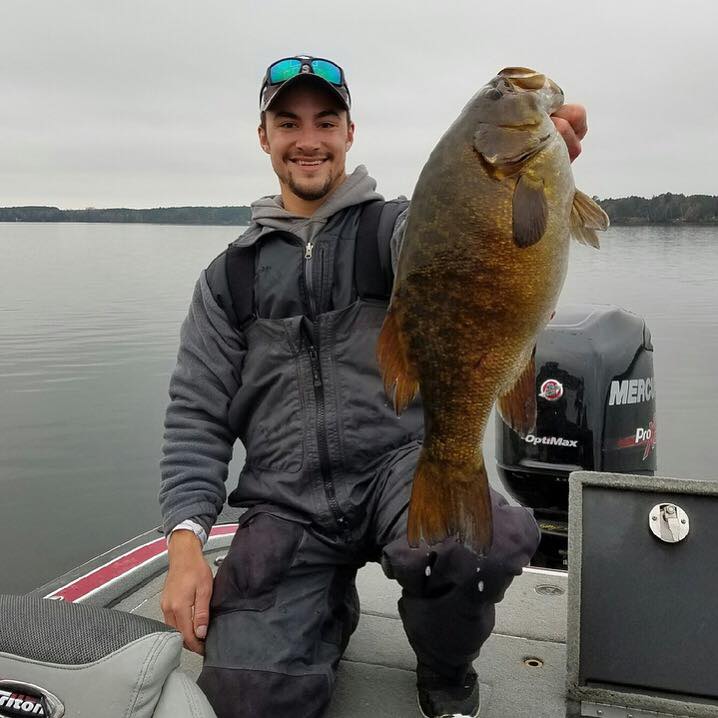
Cody Hahner, touring FLW angler from Wausau, WI, seeks the biggest smallmouth from a number of Wisconsin inland lakes. Maximizing his electronics potential and fishing new age swimbait tactics, he is able to best represent the forage preferred by these unexploited bass. Patterning cisco schools to catch open water smallmouth like this 7 pounder from November, 2016 is a bold and innovative approach to bass fishing that leads to new discoveries, adventure, and personal bests.
Cisco Swimmers
These last few seasons, Hahner and I have messaged often about swimbait tactics and open water fishing strategies. We’ve learned some days, fish go wild for a 3-hook Alabama rig, as Hahner employs. While other days they could prefer a single paddletail with a steady and erratic retrieve, as I often bomb cast and slow roll through the water column.
The swim bait is the most powerful big smallmouth bait Hahner has in his boat.
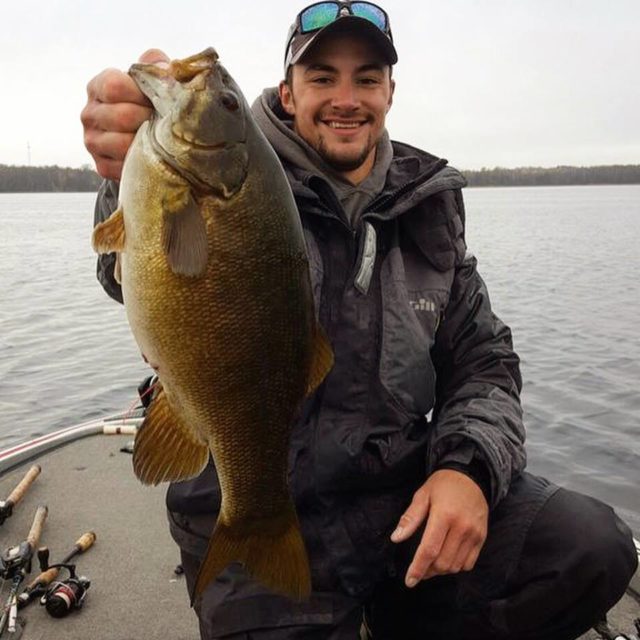
Hahner’s favorite time of year to pattern the cisco bite is late October and early November, as water temperatures approach into the low 40’s.
He often fishes the Alabama rig from early to mid pre-spawn, mid summer, and late fall. “Fish group up in deeper water during these periods, and often suspended just off the bottom,” he says. The rig gives anglers the opportunity to show bass a school of bait rather than a single offering.
The 3-hook A-rig dismantles smallmouth for Hahner. “The late fall is by far my favorite time of the year to fish for giant smallmouth,” he says.
The cisco spawn is a prime, heavy feeding period of the year for all gamefish species. Taking place from the last week of October through early November when water temperatures are in the mid to low 40’s. At this point, smallmouth are congregating in their largest schools of the year and can be caught very easily.
“This time of they year I’m looking for rock structures adjacent to the basin where cisco have been living for most of the year. More specifically I am looking for bars that top out around that 20 foot mark and are right in line with gravel banks which cisco use to spawn on. At this time of the year, smallmouth are able to anticipate their prey’s movements and looking to put on the feedbag for the upcoming winter. By far this is the best time of the year to utilize swimbaits and more specifically the A-Rig. The A-Rig is the perfect mimic to a school of cisco following structure to move into their spawning grounds,” he concludes.
In Hahner’s opinion, the rig works best with a chop or overcast conditions because of its gaudy wires. These factors help hide the rig and create a better illusion to the fish.
“The A-Rig creates the perfect illusion of small pod of bait that has broken off of the larger school. It has a greater draw power than a single bait which makes it an excellent choice when fishing for suspended deep-water fish. I prefer to fish this bait on a very slow steady retrieve with sudden fast turns of reel handle to cause the bait to flare and pulse. Smallmouths have a tendency to follow this bait until they see a sign of weakness. An abrupt burst of speed during a slow crawling retrieve often is the trigger needed to create frenzy from a school of following smallmouth,” he elaborates.
Hahner rigs the bait with 5 natural colored swimbaits that are 3-4 inches long on three ¼ oz. swimbait heads and two hookless dummy swimbaits to stay within Wisconsin Law.
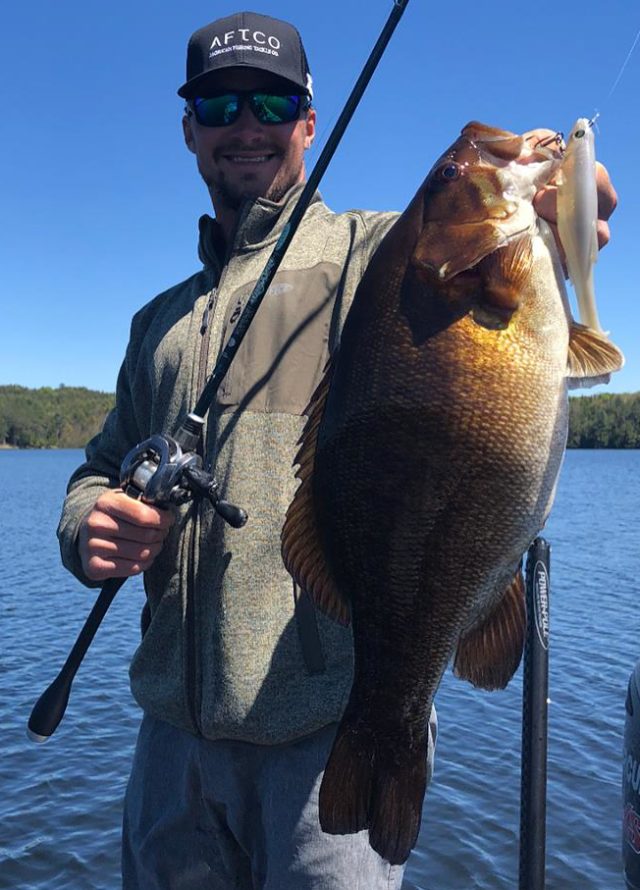 His swimbait selection varies, letting smallmouth dictate his choice. “If the fish are active, I like a 3.8” or 4.8” Keitech Fat or a Big Bite Baits 3.5” suicide shad,” he says.
His swimbait selection varies, letting smallmouth dictate his choice. “If the fish are active, I like a 3.8” or 4.8” Keitech Fat or a Big Bite Baits 3.5” suicide shad,” he says.
Both baits have a hard kicking action and work best for him in warmer water or when weather conditions like wind, overcast, or an incoming front allow it.
“When the water is cold or fish are in a neutral or negative mood I prefer a Damiki anchovy shad, Keitech 2.8 Fat, or a Keitech 4” Easy Shiner. All these baits have a more subtle action and work best for me when dealing with cold water or postfrontal conditions,” he says.
Hahner’s set-up is fished with a 7ft 11in. St.Croix Legend Tournament (heavy, moderate fast action) flipping rod, paired with a slower, powerful 6.6 gear ratio reel. The long heavy rod enables him to cast the bulky rig, and its moderate fast action helps keep fish pinned following hook set. The reel retrieves easier, and prevents him from overfishing the rig. He prefers a heavy line to accommodate for the size of the rig, such as 60 lb. Sunline fx2 braid if water color allows, or 22 lb. Sunline Shooter Fluorocarbon if fish are line shy of the braid.
The Alabama rig is a powerful bait under certain circumstances, but it does have its weaknesses, admits Hahner.
“Negative fish, slick conditions, and fish closer to structure call for single swimmers. Single swimmers offer a much less aggressive offering to the bass. Often times I’ll switch to a single swimbait or an underspin when I need a bait that I can fish closer to bottom with or when fish are ‘bumping’ but not eating the A-Rig,” he concludes.
While it’s less elaborate and technical than Hahner’s Alabama rig, my single swimmer option has become a go-to presentation that excels during summer period from mid-July through post-turnover in late October.
Casting a single swimmer is easy and engaging fishing that plays well on our clear water smallmouth fisheries of Wisconsin.
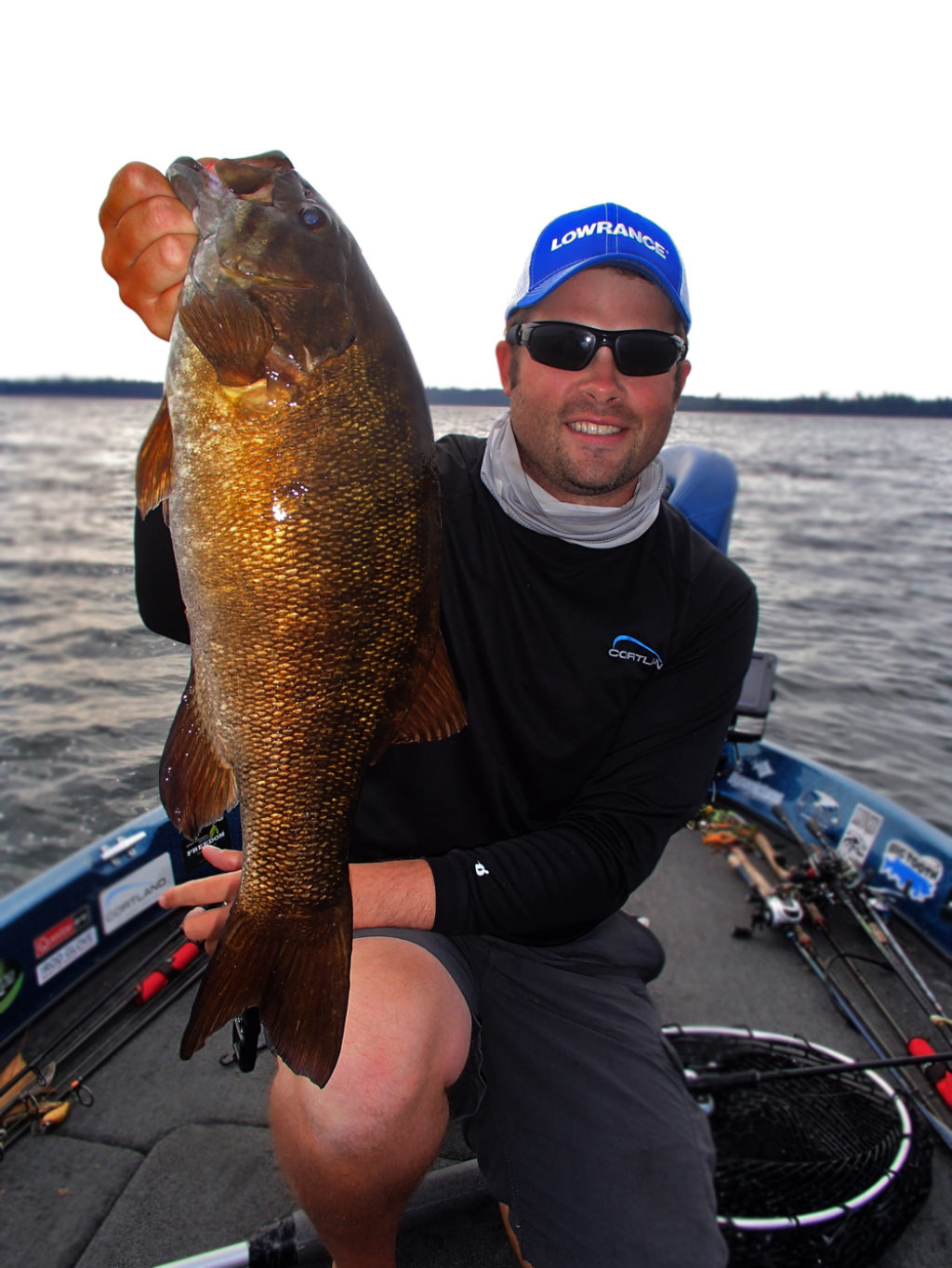
When they’re in the mood to feed, open water smallmouth will charge at paddletails from great distances, and strike viciously. 21 inch fish is held by captor.
Take a 3.8” paddletail, and rig it on a swimming style jig head. Bomb cast, count the bait down to the suggested depth of the cisco school, and let the wagging tail and wobble of the head do the work for you. A slower, steady retrieve is best, but I will mix it up with rips and pauses so that the bait slow-rolls back to the bottom and the illusion of a minnow in distress triggers a strike. Maintain the depth ciscoes and smallmouth are at.
I employ two swimmer systems. The first, and my preferred, is fished with a Freedom Tackle Corp. Hydra ½ oz. swinging head jig in white color. It promotes power, vibration, and a wide wobble from head to tail. The second is with a 3/8 oz. and ½ oz. Trokar Boxing Glove jig that serves well as a finesse option.
The interchangeable lure characteristics and swinging arm properties of the Freedom Hydra enables maximum movement of the paddletail and presentation, in addition to preventing big fish from eventually throwing hooks. The Hydra is a perfect match with a 3.8” Kalin’s Sizmic Shad in white crystal.
With the Hydra rigged with a favorite 3/0 Trokar Magworm hook rigged weedless, my swimbait has a wider side to side kick and more powerful thump to trigger strikes. When swam with a slow to medium retrieve, the jig head itself shivers and quivers with heavy vibration, catalyzing the movement for this entire big fish catching package. Many fish caught with this set-up were observed charging the bait from a great distance away. Likely an indicator that they will explosively charge at cisco schools in similar fashion.
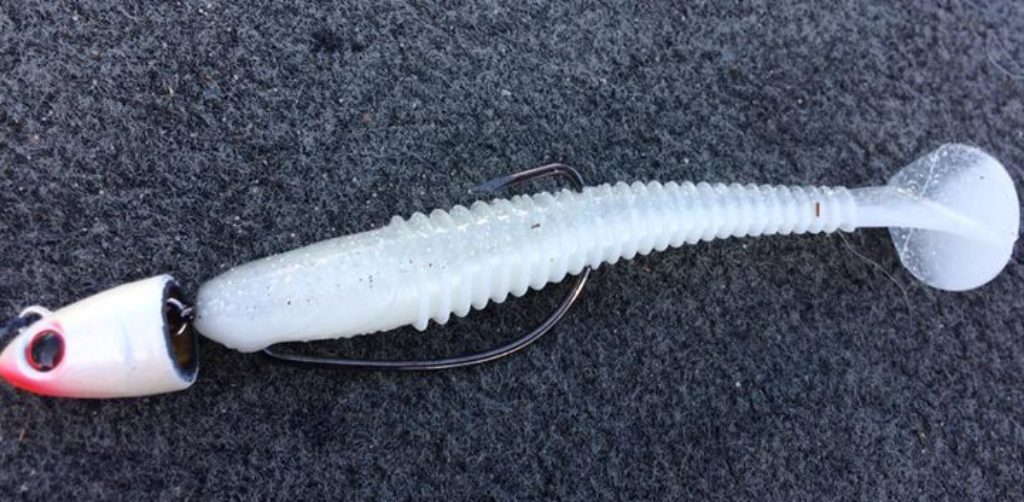
If smallmouth aren’t charging hard at the swimmer, tone down the presentation’s action by fishing the Trokar Boxing Glove Jig with 3.8” Strike King Rage Swimmer in Ayu, Pearl Flash, and Pro Blue Red Pearl. The exposed hook will restrict the swimbait’s motion and tail action, but will pin nearly every fish that strikes or nudges the bait.
Because cisco come in larger sizes, it’s advisable to increase the beefiness of your presentation some days. A suggested swimbait option for this is Sweden based, Svartzonker Tackle. While their European swimbaits are designed for musky and northern pike, they offer a downsized, lively 5” paddletail with a huge thump, the McRubber Bass. It can be fished with both my jig head and swinging head methods.
For this open water casting strategy, I’m obviously looking for pods of cisco on side imaging, but also looking for mid depth and shallow humps and rock structure that’s immediately near deep open water and main lake basins. Big smallmouth often use the deep edges and bases of those humps as ambush points to gang up on passer-by schooling cisco.
Smallmouth will form wolfpacks for feeding. They will group with other specimens of similar size to ambush prey, as this makes them more effective hunters. Despite this behavior, Hahner and I have observed different feeding behaviors. The queen bass we’ve caught from these cisco lakes are usually rogue fish and solitary. They want nothing to do with the smaller 20 inchers for aid in ambushing and corralling cisco. Rather, it seems these heavyweight 6 and 7 pounders want to own an entire submerged hump, and capture all the food by themselves.
For slinging with the 1/2 oz heads, I work with a variety of 7’2” to 7’6” Vexan Bass and Quantum PT medium heavy fast action casting rods. I pair them with Quantum PT casting reels with 7.0 gear ratios. This gear ratio is suitable for all purpose casting and varied retrieve speeds.
It might be sacrilege to not use braid, but I like some stretch to my hook sets, the shock absorption from casting, and almost never have problems with losing fish from afar. I fish with a 15 lb. low stretch copolymer manufactured by Cortland Line, and tie directly to the jig. I’m not a fan of braid for most bass casting applications anyways, and have zero confidence in any fluorocarbon leader material to attach to main line unless I am jigging. Nearly all fishing partners and guests of mine have experienced break offs on hooksets and in midst of long distance casting. With the copolymer line I simply retie after every big bite, and check for line kinks periodically.
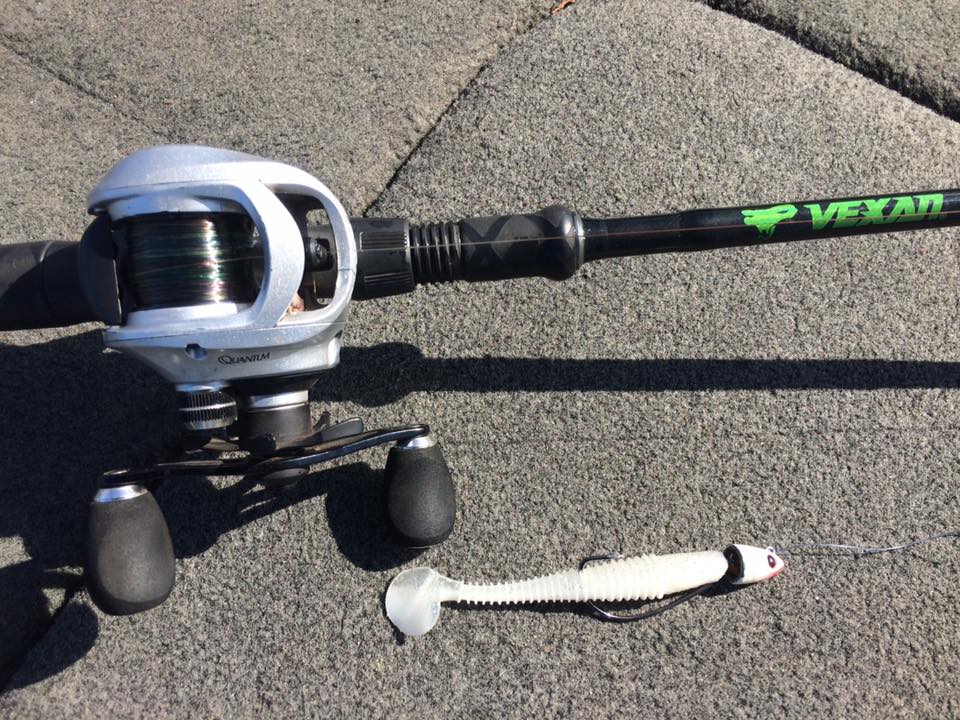
The author’s set-up for his single paddletail swimmer approach. 3.8” Kalins Sizmic Shad rigged with a ½ oz. Freedom Tackle Corp. Hydra head. For slinging with the 1/2 oz heads, I work with a variety of 7’2” to 7’6” Vexan Bass and Quantum PT medium heavy fast action casting rods. I pair them with Quantum PT casting reels with 7.0 gear ratios. This gear ratio is suitable for all purpose casting and varied retrieve speeds.
Hahner and I agree that the size of swimbait is the most important consideration to this style of fishing. Choose your sizes based on the length of the forage. Our go-to sizes are the standard 3.8” lengths for most cisco fishing situations. Young of the year cisco are about this length by August and September.
Whether cisco school by size is unknown, but their behavior and presence is far more elusive than most gamefish species. Beyond electronics, anglers will seldom see cisco dead or alive in the wild unless a summer-kill or their annual late fall spawning runs sends a few expired fish to the surface.
In Wisconsin’s inland lakes, a 15 incher is a big one, but not possible for smallmouths to consume. This is why Hahner and I will downsize our swimbaits to realistic sizes that smallmouths could handle. In the wild, smallmouths probably target the juvenile and mid size members of the cisco population most often. For size comparison, 4” cisco are typically 1 year olds, while 7” cisco are 2 year olds.
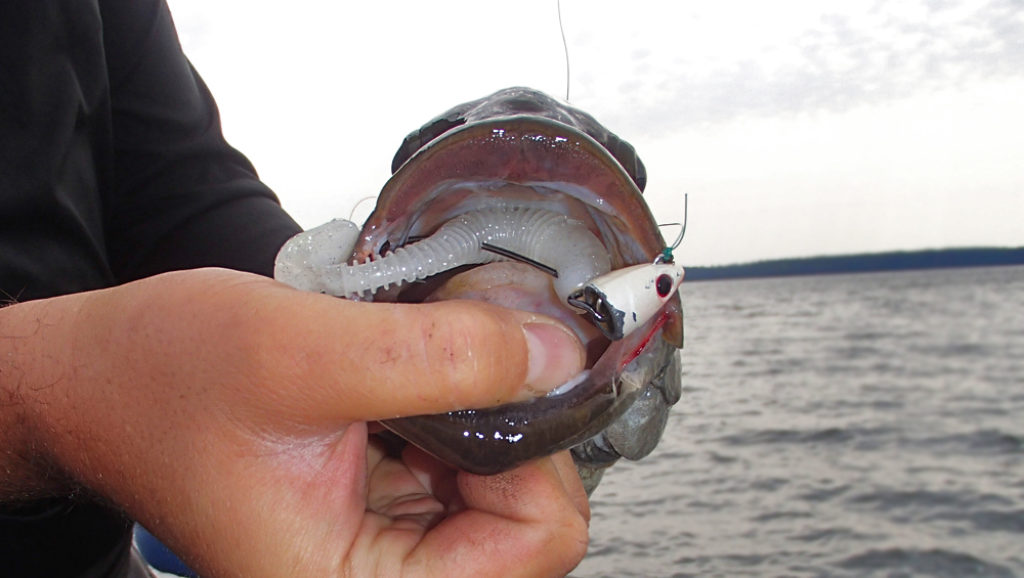
Mysteries of the deep are revealed in a smallmouth fishing sense. Big fish or bust, this bold and innovative open water fishing strategy has already resulted in a number of personal bests. Bigger records could break too, someday.
Few inland Wisconsin waters are capable of rearing 6 pounders. Fewer are able to rear a fish surpassing 7 or 8 pounds. Are the northern inland lakes, which have cisco and low density trophy smallmouth populations, capable of ever breaking the current Wisconsin state record of 9 lbs. 1 oz.?
That’s a story and debate for another time. As far as adept anglers know, cisco lakes and their low density trophy smallmouth fisheries are the ingredients to growing monstrous bass. These factors increase the odds for a potential record breaker.
Bass anglers miss fish, failing to locate and reach them with every cast. Meanwhile, DNR crews miss fish during surveys too, sometimes evading their nets and boom-shockers. Much like the world’s oceans, the deep basins and open waters of our lakes are an undiscovered, untapped pelagic world of migratory prey fish and predators. A lot remains to be further learned from exploring the mysteries of the deep, and examining the behavior and elusiveness of open water fishes.
Keep casting for unicorns. Giant smallmouth beyond everyone’s wildest dreams do exist.
